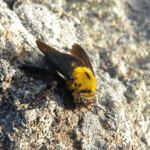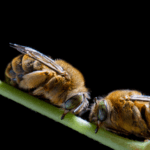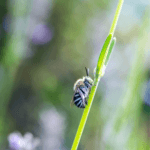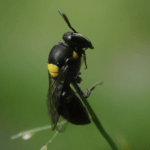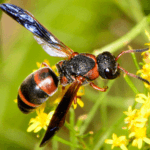
Nature’s Gentle Pollinators: Unveiling the Marvel of Stingless Bees
In the vibrant tapestry of Australian biodiversity, stingless bees (Meliponini tribe) emerge as captivating symbols of harmony, their bodies devoid of the stingers that characterize their honeybee counterparts. These gentle insects, with their soft, fuzzy bodies and persistent buzzing, are not only mesmerizing to behold but also play a vital role in maintaining the delicate balance of Australian ecosystems.
Social Architects: Crafting Collective Homes
Unlike their solitary counterparts, stingless bees are renowned for their remarkable social organization, living in cooperative colonies that can house thousands of individuals. These colonies are matriarchal, with a single queen responsible for laying eggs while the worker bees diligently groom her, feed her, and care for the young.
Stingless bees construct intricate nests, often concealed within hollow logs, tree cavities, or even underground burrows. These nests are meticulously crafted using a variety of materials, including resin, mud, and plant fibers. The bees painstakingly collect and transport these materials, assembling them into a complex network of chambers that provide a safe haven for the queen, the larvae, and the stored honey.
Pollinators Extraordinaire: Ensuring the Future of Australian Flora
While stingless bees are not as efficient pollinators as honeybees, they play a crucial role in pollinating a wide variety of Australian plants. Their smaller size and unaggressive nature allow them to access flowers that are too small or too delicate for honeybees, ensuring that these plants are able to reproduce successfully.
Stingless bees are particularly important for the pollination of native Australian plants, including legumes, orchids, and rainforest trees. Their contribution to pollination is essential for the health and diversity of Australian ecosystems, ensuring the continued survival of countless plant species and the animals that depend on them.
Gentle Neighbors: Appreciating the Stingless Bee
Stingless bees, true to their name, lack the stingers that characterize their honeybee relatives. They are generally docile creatures, posing little threat to humans. Unlike honeybees, which readily sting to defend their hive, stingless bees only sting as a last resort, typically when their nest is disturbed or threatened.
Their mild temperament and social nature make stingless bees desirable pollinators for urban environments. They can be safely kept in gardens and balconies, providing valuable pollination services while adding a touch of nature’s charm to our homes.
Preserving the Gentle Wonders: Protecting the Habitat of Stingless Bees
As we marvel at these captivating creatures, let us also remember the importance of conserving their habitat. By protecting native vegetation, minimizing the use of pesticides, and providing nesting sites, we can ensure that stingless bees continue to thrive in their natural environment, their gentle wings carrying life and sustenance to the diverse flora of Australia.
What should I do if I see a stingless bee?
Contact Us if you ever see teddy bear in your garden or home. Our expert team will guide you with the best advice possible

